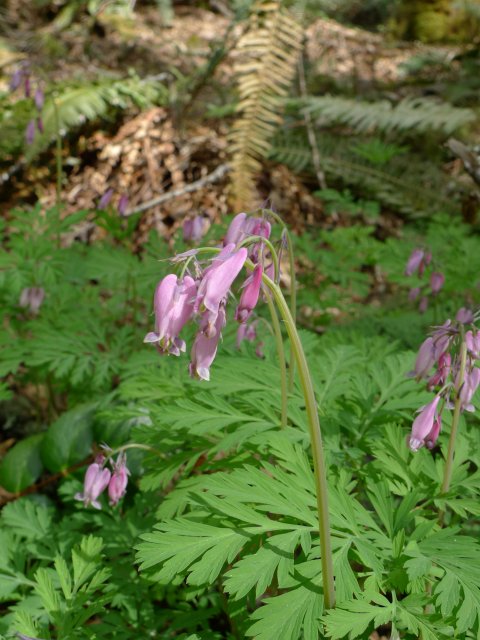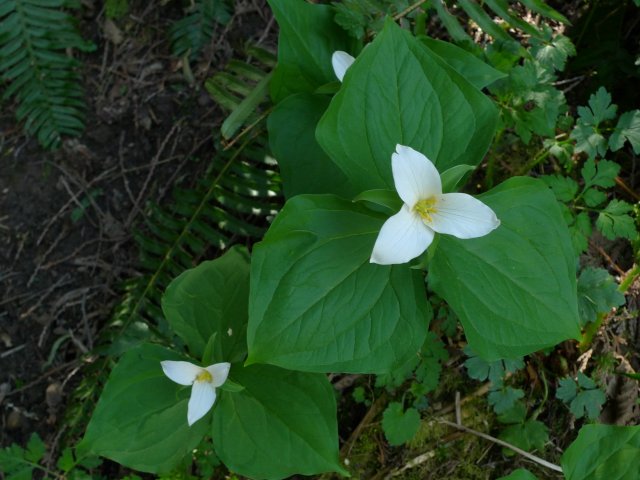Two Woodland Flowers
Published at 08:39 on 25 April 2021


Time for another quiz: What do the above plants, specifically the seeds of these plants, have in common?
The answer is ants. Both bear seeds which have an attached oily appendage that is attractive and nutritious to ants, who tend to carry the seeds for some distance before detaching the appendage and returning to their nest with it. This is actually quite a common characteristic, particularly in forest understory species, and has evolved independently many times in the plant kingdom. It is a particularly common trait in the hardwood forests of Eastern North America, which have many more species of these “ant plants” than we do here.
Trilliums in particular often seem to decline in abundance in woods near urban areas with higher amounts of human impact. Those same woods tend to no longer host populations of our native Western Thatching Ant (Formica obscuripes). These red-and-black ants build large anthills of forest debris, and are themselves significantly larger than most introduced ants. It is my theory that these ants, being larger, do a better job of dispersing ant-dispersed seeds for the simple reason that they are capable of carrying them for longer distances.
Both the Pacific Bleeding Heart and the Western Trillium are presently in bloom in our woods.
Pacific Bleeding Heart
This is a member of a small genus of plants, all of which have oddly-shaped, bilaterally-symmetric flowers. Indigenous peoples made limited herbal use of this plant, and such experimentation is not recommended, as all species in this genus are quite toxic.
The common garden Bleeding Heart (Dicentra spectabilis) is a close relative of this plant. If you head east across the Cascades in the spring, you might encounter the related Steer’s Head (Dicentra uniflora). If you head south to the Columbia Gorge, you might see the Dutchman’s Breeches (Dicentra cucullaria). This latter species has an unusual distribution, being found for the most part in eastern and central North America, but with some disjunct populations in the Columbia Basin.
Western Trillium
This is one of about 50 species of trilliums worldwide; like the Pacific Bleeding Heart it is the only member of its genus found in this area. It is by far the most common trillum in the Western United States.
It is generally a bad idea to pick our native wildflowers, and trilliums in particular are set back more than the average plant by having their flowers picked, for the simple reason that picking a trillium involves destroying the entire above-ground parts of a plant. This is quite the serious setback for an organism that produces but three leaves and one flower per season. It is likely that picking as much as (or more than) the lack of suitable ants for seed dispersal figures in how woods nearer “civilization” tend to have fewer trilliums.
If you explore the woods south of Olympia, and you are lucky, you may spot the Sessile Trillium (Trillium chloropetalum), which has narrower petals and whose flower is not held above the leaves on a stalk. Yet more trillium species are found as one heads further south into Southern Oregon and California.
